Physical Address
304 North Cardinal St.
Dorchester Center, MA 02124
Physical Address
304 North Cardinal St.
Dorchester Center, MA 02124
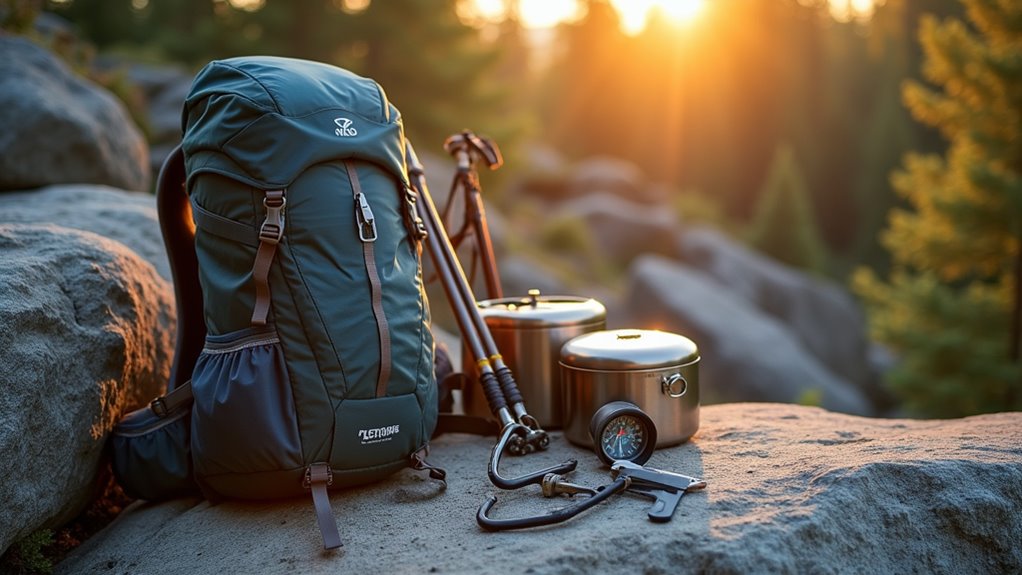
Packing the right backpack gear separates unforgettable outdoor adventures from potential disasters—discover what essential items could save your next expedition.
You’re standing at the trailhead, backpack loaded and adventure calling, but what you’ve packed could make or break your entire outdoor experience. The gear strapped to your back isn’t just equipment—it’s your lifeline, shelter, and sustenance rolled into one portable system. Whether you’re planning a day hike or a week-long expedition, the choices you make about what goes in that pack will determine if you’ll return with incredible memories or hard-learned lessons.
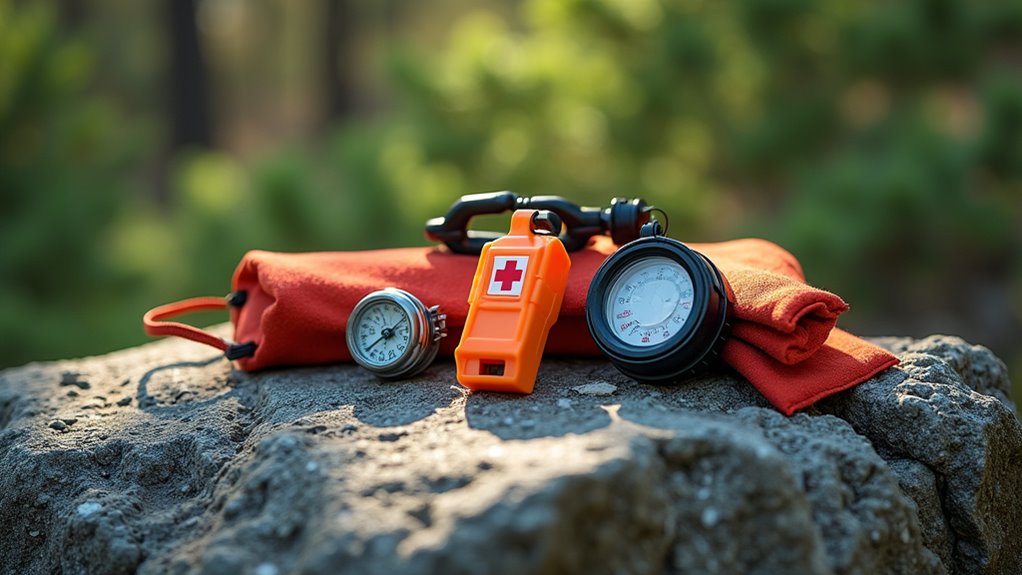
When you’re miles from civilization with no cell service, the safety gear in your pack becomes your lifeline. You’ll need a first aid kit with bandages, antiseptic, pain relievers, and any personal medications. Pack a whistle for emergency signaling—it’s louder than your voice and requires less energy.
A headlamp with extra batteries keeps you visible and mobile after dark. Don’t forget a space blanket; it’s lightweight but provides essential warmth in emergencies. Include waterproof matches or a reliable fire starter for warmth and signaling.
A knife or multi-tool handles various tasks from food prep to gear repairs. Finally, carry a detailed map and compass—GPS devices fail, but these analog tools won’t let you down when you need them most. These seven essential items form the foundation of any perfect hiking bag and could mean the difference between a minor inconvenience and a life-threatening situation.
While traditional map and compass skills form your navigation foundation, today’s hikers can leverage powerful digital tools to enhance trail safety and confidence. GPS devices and smartphone apps provide real-time location data, but they shouldn’t replace your basic navigation knowledge.
Your essential navigation toolkit should include:
Don’t rely solely on technology. Weather, dead batteries, and signal loss can leave you stranded.
Practice using your compass and map together regularly. Download trail maps to your phone before heading out, and always inform someone of your planned route. Just as snowboarders evaluate whether specialized training camps provide sufficient value for skill development, hikers should assess whether investing in premium navigation gear matches their experience level and adventure goals.
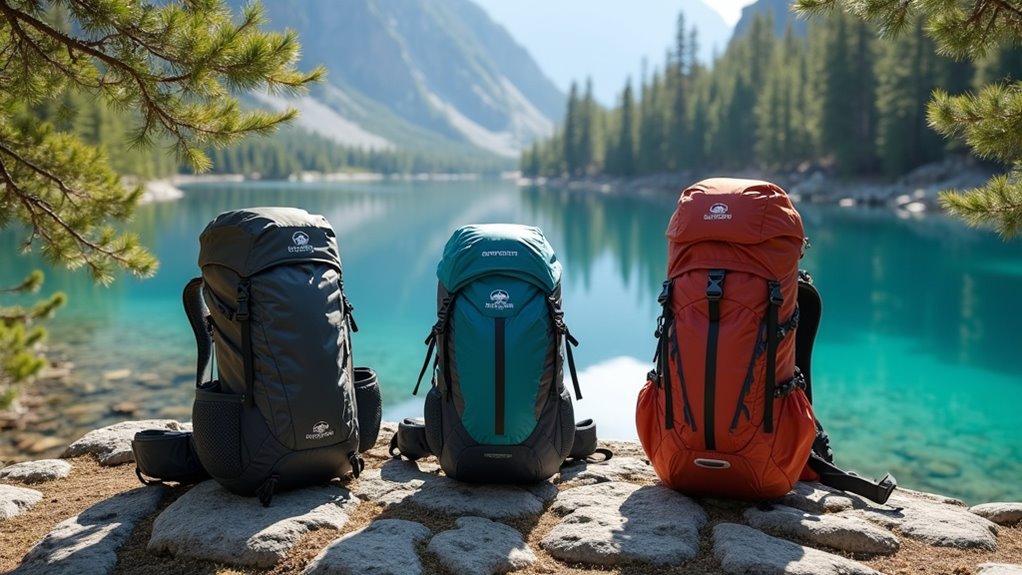
How do you match your pack to your hiking style? Start by considering your adventure length and terrain. Day hikers need 20-30 liter packs with hydration compatibility and easy access pockets. Weekend warriors require 40-50 liters with sleeping bag compartments and gear organization. Multi-day backpackers need 60+ liters featuring external attachment points and robust frame systems.
Consider your body type too. Torso length matters more than height—measure from your C7 vertebra to your iliac crest. Women’s packs offer narrower shoulder straps, shorter torso lengths, and curved hip belts designed for different body shapes.
Weight distribution is essential. Internal frames work best for technical terrain, while external frames excel on established trails with heavy loads. Test different brands since fit varies markedly between manufacturers.
Remember that pack right means selecting a backpack that balances comfort, functionality, and durability for your specific outdoor adventures.
Why do experienced hikers swear by layering systems instead of single heavy jackets? Because layers adapt to changing conditions while maintaining ideal body temperature and moisture management.
Your clothing system should include three essential layers. The base layer wicks moisture from your skin, keeping you dry during exertion. Mid-layers provide insulation – fleece, down, or synthetic materials trap warm air. Your outer shell blocks wind and rain while allowing vapor to escape.
Here’s your essential weather protection checklist:
Don’t forget accessories – waterproof gloves, warm hat, and sun protection complete your system. Remember that proper clothing is just one component of a successful camping experience that requires thoughtful preparation across all gear categories.
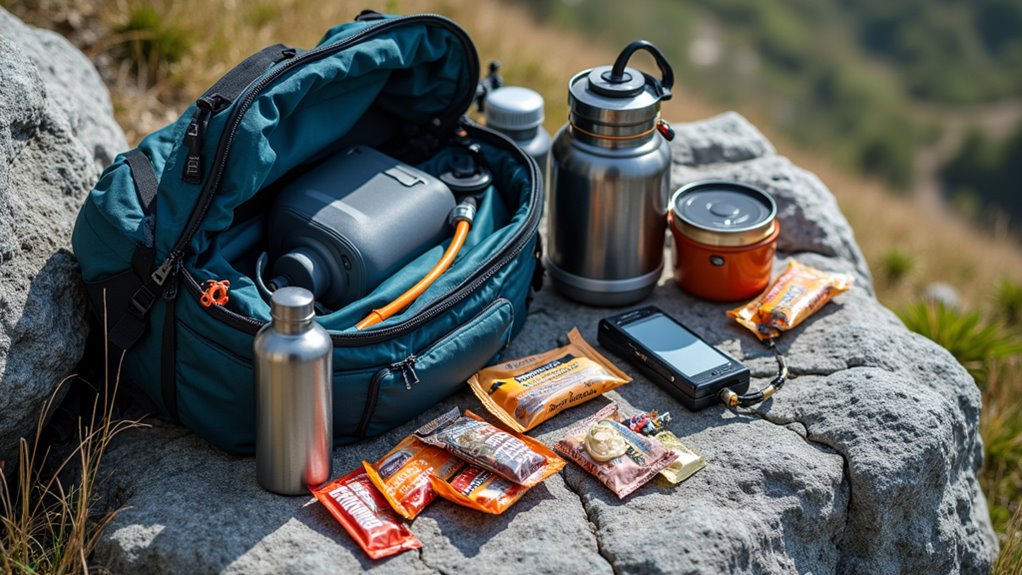
When you’re burning 3,000-4,000 calories per day on the trail, your food and water strategy becomes as critical as your navigation skills. Pack calorie-dense foods like nuts, dried fruits, and energy bars that won’t spoil or weigh you down.
Plan for 2,500-3,000 calories daily, focusing on quick-cooking meals that require minimal fuel.
Water’s your lifeline—carry purification tablets, a reliable filter, or UV sterilizer. You’ll need 2-4 liters daily depending on climate and exertion level. Don’t wait until you’re thirsty; sip regularly throughout the day.
Smart hydration means electrolyte replacement too. Pack salt tablets or electrolyte powder to prevent cramping and maintain energy levels. Know your water sources beforehand and always have backup purification methods.
Remember to follow low impact camping principles by properly disposing of food scraps and using established water sources to minimize environmental disruption.
Your shelter choice can make or break your overnight backcountry experience. You’ll face three main options, each with distinct advantages depending on conditions and your experience level.
Tents offer maximum protection and comfort but add weight. They’re your best bet for harsh weather or when camping above treeline.
Bivy sacks provide minimalist shelter that’s ultralight and compact, though they can feel claustrophobic and offer limited weather protection.
Tarp shelters require more skill but offer versatility and weight savings.
Consider these key factors when choosing:
Many experienced hikers combine shelter planning with bushwalking techniques to maximize their outdoor adventures while maintaining safety and comfort.
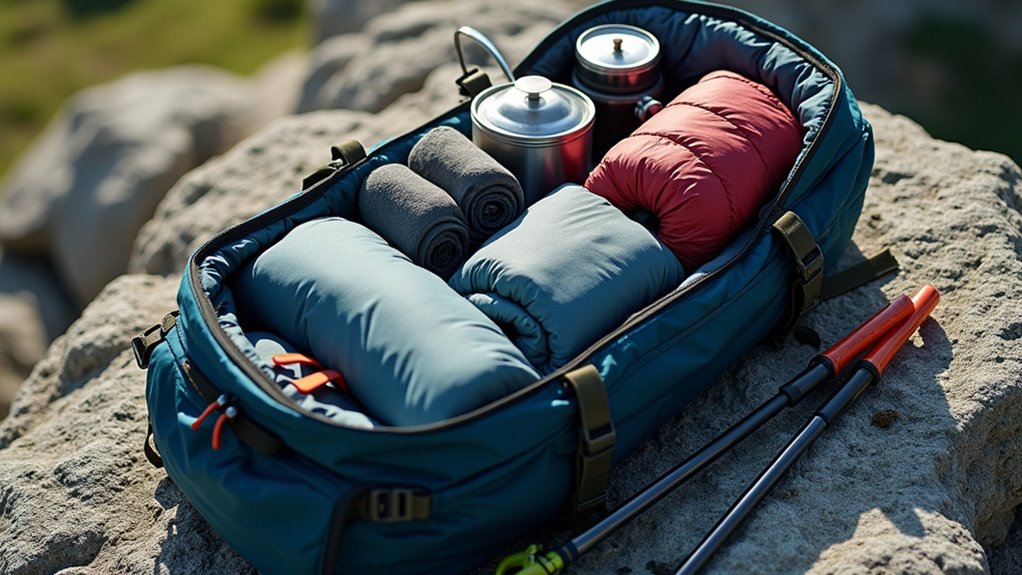
Since every pound on your back translates to fatigue and reduced enjoyment on the trail, mastering weight management becomes essential for successful backpacking. Start by weighing every item and questioning its necessity. Choose multi-purpose gear whenever possible—a trekking pole that doubles as tent support, or a smartphone that replaces your camera, GPS, and entertainment.
Pack heavy items close to your back and centered between your shoulder blades. Light, bulky items go at the bottom, while frequently needed gear stays easily accessible. Distribute weight evenly using side pockets for water bottles.
Consider upgrading to ultralight versions of your heaviest items: shelter, sleeping system, and pack itself. You’ll immediately notice the difference when climbing that first steep incline.
Remember that selecting the perfect outdoor backpack requires careful consideration of your specific needs, trip duration, and gear requirements to ensure optimal weight distribution and comfort throughout your adventure.
Quality backpacking gear represents a significant investment, but proper upkeep can extend its lifespan by years and ensure it performs when you need it most.
You’ll want to clean and inspect your equipment after every trip, addressing any issues before they become major problems.
Here’s your essential maintenance routine:
Regular maintenance isn’t glamorous, but it’ll keep your gear reliable for countless adventures ahead.
Taking time to properly maintain your equipment is just as important as the initial camping trip preparation, as both contribute to a safe and successful outdoor experience.
Your backpack becomes more than gear—it’s your lifeline threading through wilderness paths. Like a trusted compass pointing toward adventure, it carries your dreams while shouldering your burdens. You’ve learned to pack smart, stay safe, and respect the trail. Now you’re ready to write your own outdoor story. Each zipper pull is a chapter waiting to unfold, each pocket holds possibilities. Go explore—your well-prepared pack is your passport to extraordinary experiences.